



METHOD | DESCRIPTION | BEST USED FOR | EXAMPLE |
|---|---|---|---|
Quantitative | Collects numerical data for statistical analysis | Large-scale studies, testing hypotheses | Surveys with closed-ended questions |
Qualitative | Collects non-numerical data for interpretive analysis | Exploring complex phenomena, generating theories | In-depth interviews, focus groups |
Mixed Methods | Combines quantitative and qualitative approaches | Comprehensive understanding of complex issues | Survey followed by interviews |

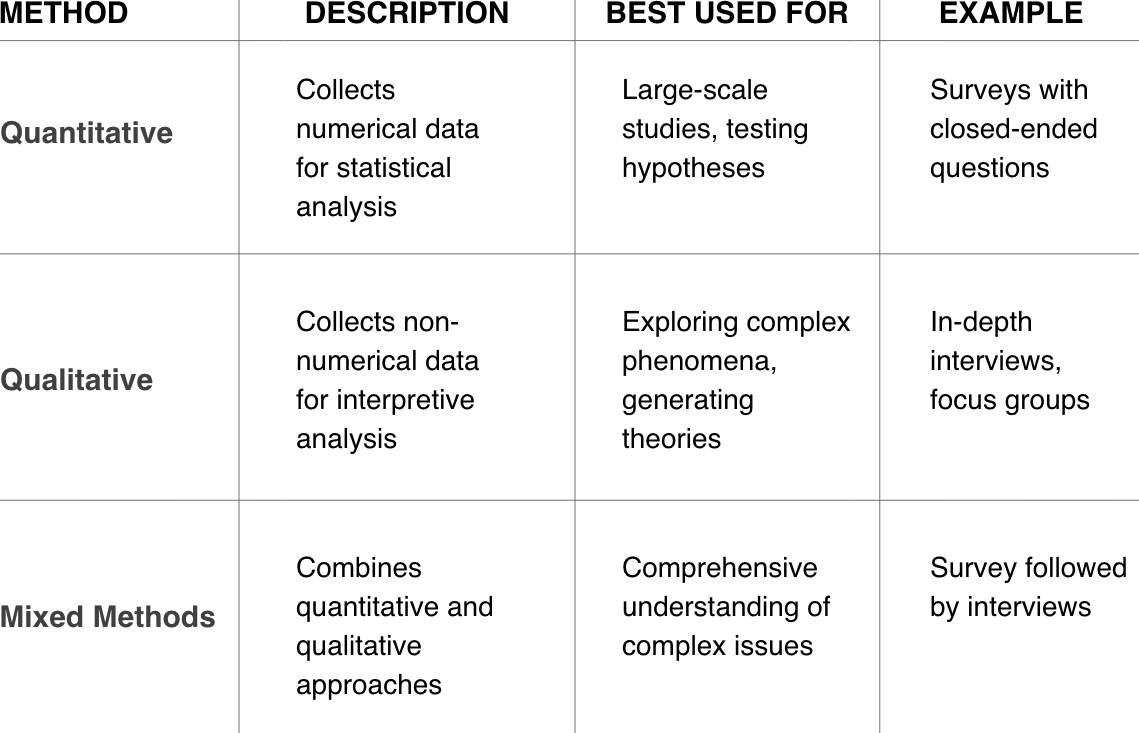
TECHNIQUE | USED FOR | EXAMPLE |
|---|---|---|
Descriptive Statistics | Summarizing and describing data | Mean, median, mode, standard deviation |
Inferential Statistics | Drawing conclusions from sample data | T-tests, ANOVA, regression analysis |
Thematic Analysis | Identifying patterns in qualitative data | Coding interview transcripts for common themes |
Content Analysis | Analyzing text or visual data | Evaluating recurring themes in newspaper articles |
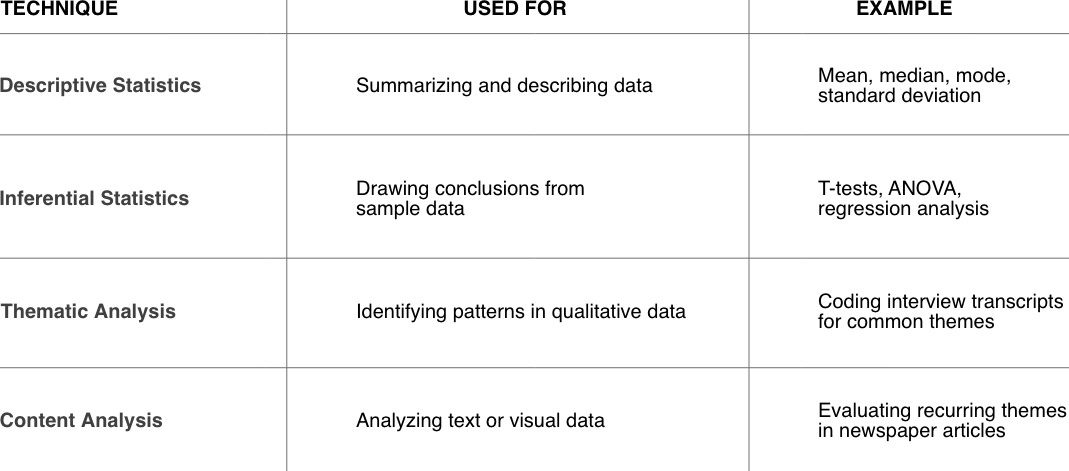
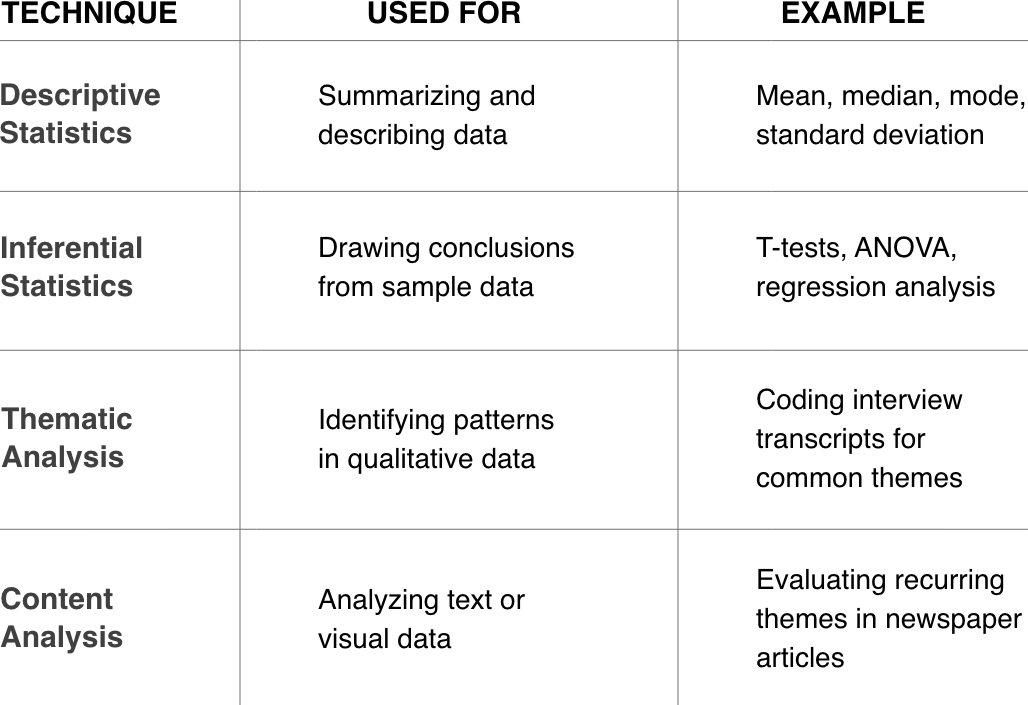
SECTION | PURPOSE | KEY COMPONENTS |
|---|---|---|
Introduction | Set the context for study | Background, research question, significance |
Literature Review | Summarize existing research | Synthesis of relevant studies, identification of gaps |
Methodology | Describe research approach | Research design, data collection methods, analysis techniques |
Results | Present findings | Data presentation, statistical analyses, key themes |
Discussion | Interpret results | Relation to existing literature, implications, limitations |
Conclusion | Summarize key points | Main findings, broader impact, future research directions |
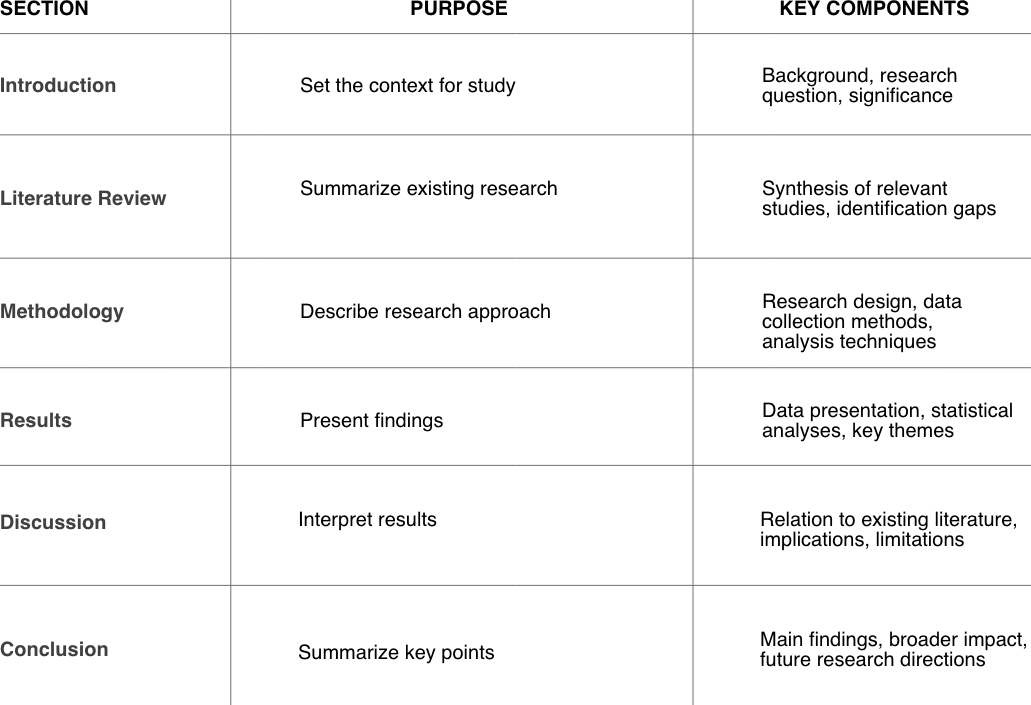
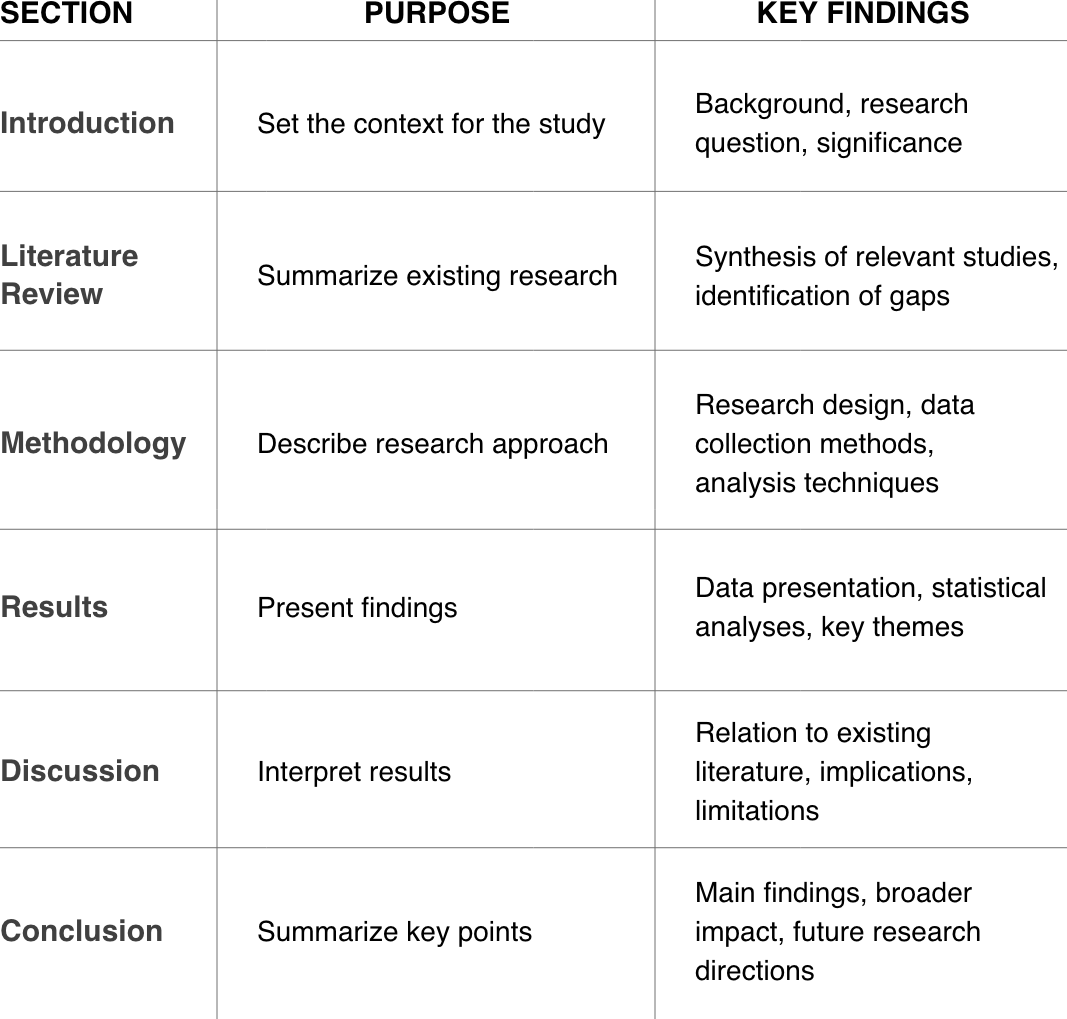




Level-up current events into dynamic learning!